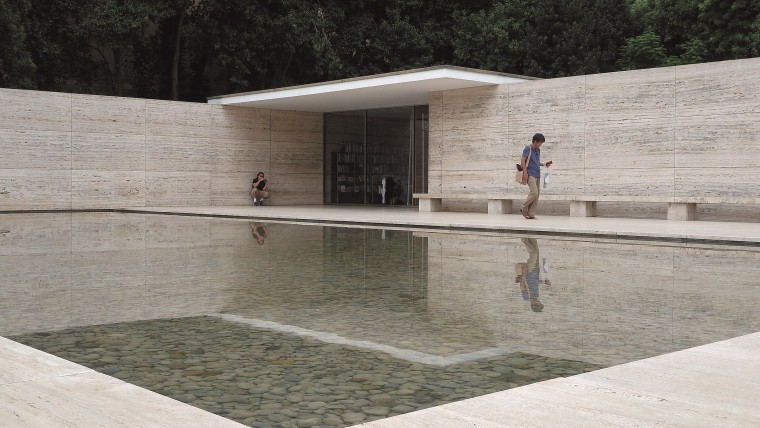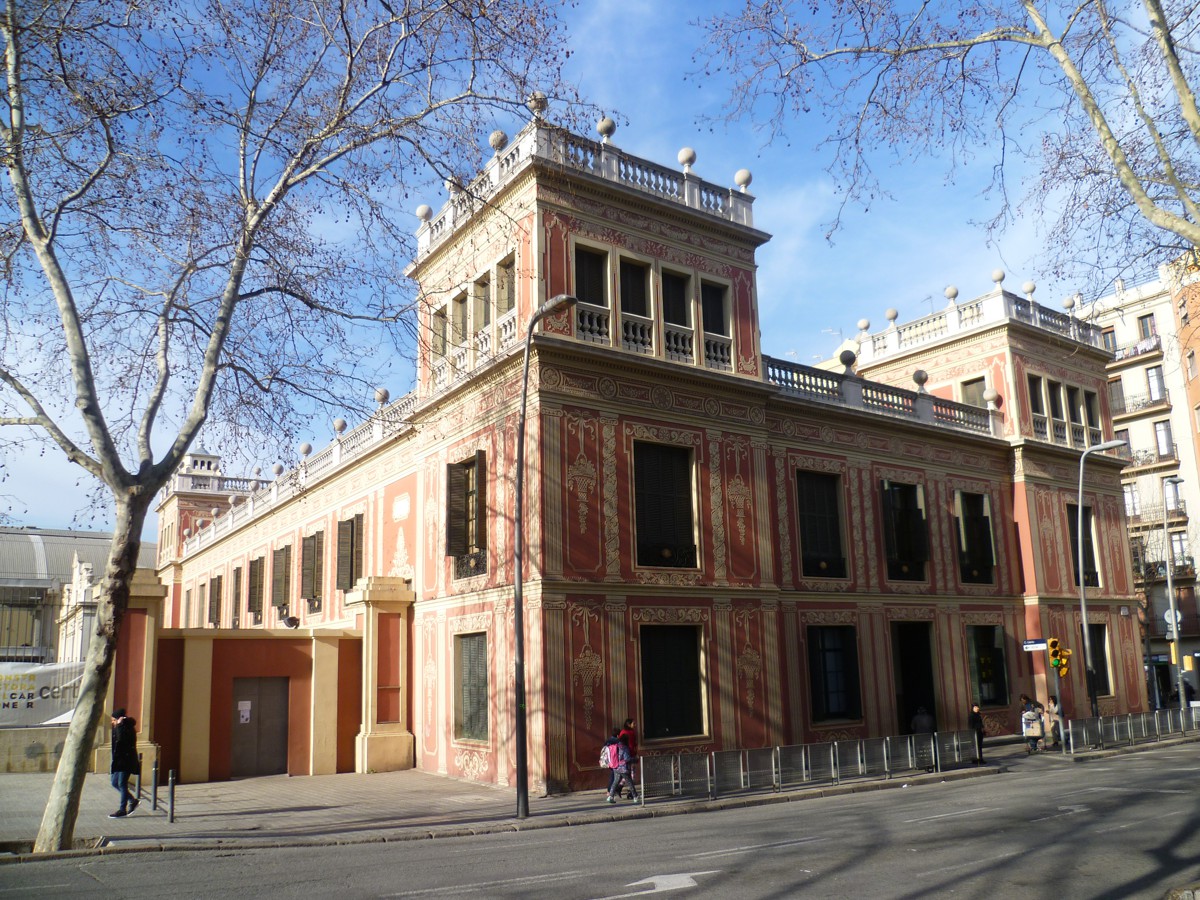meet.barcelona

Visit and love it
Institut Municipal Fundació Mies van der Rohe
Download date: 10/04/2024

International symbol of rationalist architecture, the Mies van der Rohe Pavilion, situated in Montjuïc Park, is one of the gems of architectural design in Barcelona.
-
Cultural heritage
An architectural landmark
Also known as the Pavelló Alemany (German Pavilion), the Mies van der Rohe Pavilion,hidden away in a corner of Montjuic Park,is a world famous construction and architectural landmark from the early avant-garde period of the 1920s. The architect Mies van der Rohe, who was also director of the Bauhaus, designed this building to represent Germany in the Barcelona International Exposition of 1929. Known as the father of modern architecture, Van der Rohe incorporated in the design of this building the basis of his philosophy: perfect symmetry, translucent spaces, clarity, simplicity and minimalism. This is how he wanted to represent the Germany of the Weimar Republic following the First World War, and this building was intended to be a symbol of all these elements.
Faithful design
The pavilion was removed in 1930 and in 1989 it was decided to reconstruct it due to the importance of its design as a piece of modern architecture.The four different types of marble originally used, Roman travertine, green marble from the Alps, ancient green marble from Greece and golden onyx from the Atlas Mountains, were also used in the reconstruction, along with the sculpture of George Kolbe strategically located next to the pond, playing with the light and reflections of the water. Currently home to a Foundation, the building is open to the public and is mainly dedicated to disseminating the work of the architect and to promoting the debate on architecture and modern and contemporary art.
 :
:
Location and contact
Location and contact

Institut Municipal Fundació Mies van der Rohe
- Address:
- Avinguda de Francesc Ferrer i Guàrdia, 7
- Districte:
- Sants-Montjuïc
- Neighborhood:
- el Poble-sec
- City:
- Barcelona
-
- Phone number
- 932151011 (Tel.)
-
- Links
- Web: http://miesbcn.com/ca
- Email: pavello@miesbcn.com
Timetable and prices
Timetable
| Period | Dies | Hores | Preus |
|---|---|---|---|
| De l'1 març al 31 octubre | Cada dia excepte 25 abril, 30 abril, 7 maig, 13 maig, 14 maig, 21 maig, 24 maig i 30 maig | de 10:00 h a 20:00 h | Entrada general: 8 € . Reduïda: 4 € - estudiants - jubilats - aturats - targeta rosa reduïda - família nombrosa . Grups: - 6 € per persona (mínim 15 persones i amb reserva prèvia obligatória) . 25 % descomptes - tiquet bus turístic - targeta Bcn Card - tiquet Barcelona City Tour . Gratuïta: - primer diumenge de mes - menors de 16 anys - carnet de l'ICOM - guies turístics professionals exercint la professió - Passi Metropolità d'Acompanyant d'un Discapacitat - professors d'ensenyament reglat amb grup d'alumnes - carnet Associació Museòlegs de Catalunya - targeta rosa gratuïta - 11 de febrer (Santa Eulàlia) - 23 d'abril (Sant Jordi) - 24 de setembre (La Mercè) - 7 i 8 octubre (Viu Montjuic. El Parc de la Cultura) Visita especialitzada d'arquitectura: 97 €. Servei especialitzat i personalitzat de visita guiada realitzada per un arquitecte especialista per a un grup de persones. Amb reserva i pagament previ obligatori. No inclou el preu de les entrades. |
La Nit dels Museus 2024: 18 de maig |
de 19.00 h a 01.00 h | Entrada Gratuïta |
|
| De l'1 novembre al 28 febrer | Cada dia | de 10:00 h a 18:00 h | Entrada general: 8 € . Reduïda: 4 € - estudiants - jubilats - aturats - targeta rosa reduïda - família nombrosa . Grups: - 6 € per persona (mínim 15 persones i amb reserva prèvia obligatória) . 25 % descomptes - tiquet bus turístic - targeta Bcn Card - tiquet Barcelona City Tour . Gratuïta: - primer diumenge de mes - menors de 16 anys - carnet de l'ICOM - guies turístics professionals exercint la professió - Passi Metropolità d'Acompanyant d'un Discapacitat - professors d'ensenyament reglat amb grup d'alumnes - carnet Associació Museòlegs de Catalunya - targeta rosa gratuïta - 11 de febrer (Santa Eulàlia) - 23 d'abril (Sant Jordi) - 24 de setembre (La Mercè) - 7 i 8 octubre (Viu Montjuic. El Parc de la Cultura) Visita especialitzada d'arquitectura: 97 €. Servei especialitzat i personalitzat de visita guiada realitzada per un arquitecte especialista per a un grup de persones. Amb reserva i pagament previ obligatori. No inclou el preu de les entrades. |
Events
Events
-
Visites al Pavelló Mies Van Der Rohe
When: Permanent event
-
Visita guiada al Pavelló Mies van der Rohe
When: Permanent event
Observacions
Construït per a l'Exposició Universal de Barcelona de 1929, un cop acabada la mostra es va desmuntar. Posteriorment, l'any 1983, va ser reconstruït en el mateix emplaçament seguint el projecte original de l'arquitecte Ludwig Mies van der Rohe i es va inaugurar l'any 1986.
Discover other related points of interest
-
Magic Fountain

Plaça de Carles Buïgas 1
-
Palau de la Premsa

Av Rius i Taulet 5
-
Mossèn Jacint Verdaguer School

C Lleida 32




